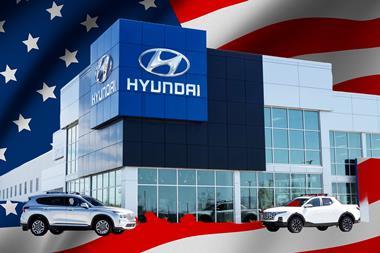Dr. Ing. Qiaoyan Ye and Dr. Oliver Tiedje of Fraunhofer IPA discuss the ability of modelling and numerical simulation to improve painting processes

Computer-aided engineering and numerical simulation based on computational fluid dynamics (CFD) can be a very useful tool for planning and optimisation tasks in industrial applications. This is certainly true for automotive painting, given that it accounts for a high proportion of the total cost of car body production.
During the last few years, the modelling and numerical simulation of different spraying methods have been carried out at the Fraunhofer Institute for Manufacturing Engineering and Automation IPA in Stuttgart. The investigated performance parameters include:
- Turbulent flows field between the atomiser and the target, mainly affected by the shaping air flow rate and the booth flow
- Formation of a static electrical field between the bell and target
- Charging of the paint droplets at the bell
- Space charge effects due to the flow of charged paint droplets
- Coulomb forces acting on the droplets.
The benefits of numerical simulation
The potential benefits and goals of numerical simulation are considerable:
- Verification of facility layouts, with implications for factors such as air streams, local solvent concentrations and process times
- Parameter optimisation, especially if practical trials would be expensive due to the downtime they would incur
- Calculation and visualisation of non-measurable process values, for instance those involved in the mixing of two component paints
- Worst-case validation, for example involving unusual instances such as temperature fluctuations, particularly expensive problems such as faults in the facility or potentially dangerous situations such as the danger of explosions due to high solvent concentrations
- Assessing the influence of specific factors on process stability
- Investigation of the interaction of different factors in error analysis procedures
- Testing of reproducibility before first prototypes are built in product design projects
A recent cooperative research project has investigated the drying process of paint in the automotive industry. One development is an experimentally verified simulation tool which predicts the transient convective drying of paint films on complex, three-dimensional workpieces of which car bodies are an obvious example. Properties which the tool can model include heat and mass transfer in a thin, water-based paint film.
Such simulation results have the potential to provide useful information for process optimisation which aims to achieve high levels of energy efficiency. For example, this development could facilitate the optimisation of the injectors in paint dryers, resulting in faster and more homogenous heating of the car body. Other activities have been focused on waste material, targeting the optimisation of the air management within the painting booths, which is a major source of energy consumption in the coating process. At present, overspray has to be removed with the help of special technology that requires a stream of air within the painting booth to be heated and kept moist, a requirement that is energy-intensive and therefore expensive. However, it is now evident that numerical simulation can be used to minimise such factors.
Much of this work has been carried out under the auspices of a cooperative research project funded by the German Federal Ministry of Education and Research called Green Carbody Technologies, or InnoCaT.
Within this programme, a specific set of three sub-projects which ran from March 2010 to December 2012 addressed the area of Energy Efficient Painting. The work on paint drying and overspray management accounted for two of them. The partners in the first of those were Eisenmann, Audi, Daimler and IPA, while in the second they were Dürr, Audi, Daimler, Mankiewicz and, again, IPA.
The third of these projects – in which the partners were Audi, Daimler, Dürr, Wörwag and IPA – was broader in scale, since it addressed modular product and facility concepts which could reduce energy demands involved in painting. The results of the R&D suggest that modular automotive body fabrication leads to significantly more efficient painting of the individual parts. This also fits in well with the trend towards lightweight construction, where the use of a variety of materials is imperative.
One possible approach would involve the fabrication of automotive bodies as a framework construction with modular attachments. The various substrates would be fed through specific pre-treatment systems. Only the attachment parts, which frequently have large surface areas, would then be painted. UV technology, for example – with all of its advantages – as well as radiant drying, could gain in significance as a consequence. Another important implication of this approach is that it would involve small and flexible cabins adapted to the geometry and material of the parts involved.


































